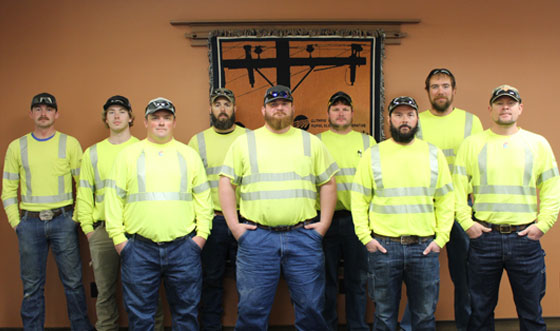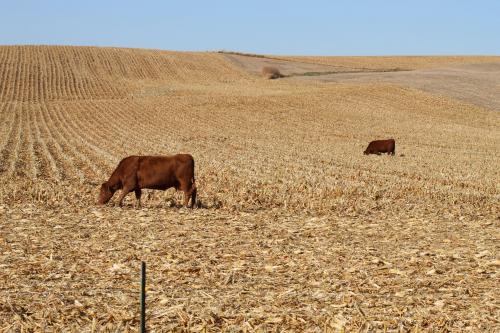Snow dogs

Mya Albers with dog Ernie

Stella Albers with dog Charlie
Special to the Times Vedette
Mya and Stella Albers enjoyed the snow with their dogs, Ernie and Charlie, this weekwhen Panorama Schools were cancelled.

Stella and Mya Albers

Mya Albers with dog Ernie

Stella Albers with dog Charlie
Special to the Times Vedette
Mya and Stella Albers enjoyed the snow with their dogs, Ernie and Charlie, this weekwhen Panorama Schools were cancelled.

Stella and Mya Albers

The words we Americans choose say a lot about us. Sometimes they define us as being rural or urban. Other times, they uncover what region of the country we are from. And, more often than not, they are simply the words our parents or schoolteachers taught us to use. Even so, we still decide which words to use.
What do you call the long piece of furniture in your living room? Is it a couch? Or a sofa? Or a davenport?
What are the names of those flying, glow-in-the-dark insects? Fireflies? Lightning bugs? Firebugs? Glowworms?
And how about the clothes you slip into on your bottom half, one leg at a time? Are they pants? Trousers? Slacks?
What word(s) do you use to define the comfortable shoes you put on your feet? Sneakers? Or tennis shoes?
Some of us still use cash, but where do we store it? In a billfold? Wallet? Pocketbook?
One of the most geographically defined words is the name of that fizzy stuff we sometimes consume. Do you call it pop? Or do you say soda? Or coke? Or the blandest choice, soft drink?
When you have a pop or a soda or a coke or a soft drink with evening food, do you call that meal dinner? Or supper?
Let’s not forget about breakfast and one of its most beloved menu items. Depending on where you reside, you may call them pancakes. Or flapjacks. Or hotcakes. Or Johnnycakes. Or silver dollars. The name doesn’t matter to me, as long as they are covered in maple syrup.
When you get food to go, do you call it takeout or carryout? Or both?
When you buy food, do you do so at the grocery store or the supermarket? And do you put your food items in a grocery cart or a buggy or a carriage?
And, last but not least, here is my favorite word distinction. What do you call the pieces of bread on the ends of the loaf? Are they the heels? Or crusts? Or butts?
What ones did I miss? Send me a note and let me know.
Have a great Friday, and thanks for reading.
Shane Goodman
Editor and Publisher
Times Vedette digital newsletter
shane@dmcityview.com
641-755-2115
From Iowa Department of Natural Resources
Iowa’s final deer seasons are now open — the Population Management January Antlerless Season and the Excess Tag January Antlerless Season. Both seasons run from Jan. 11-21, but there are differences between the two.
Population Management January Antlerless Season
Season is Jan. 11-21. Counties open are Allamakee, Appanoose, Decatur, Lucas, Monroe, Wayne and Winneshiek. Hunters may use bows, muzzleloaders, handguns, shotguns, crossbows, or rifles .223 caliber to .500 caliber as a method of take.
Excess Tag January Antlerless Season
Season is Jan. 11-21. Counties open are Adair, Adams, Allamakee, Appanoose, Clarke, Clayton, Dallas, Davis, Decatur, Fayette, Jefferson, Lee, Lucas, Madison, Monroe, Ringgold, Taylor, Union, Van Buren, Wapello, Wayne and Winneshiek. Due to the compressed timeline, license sales will only be available over the counter, not online, until the quota is filled. Hunters participating in the excess tag January antlerless season may only use rifles from .223 caliber to .500 caliber as a method of take.

Many prizes were given to attendees, including this electric grill to Kay Hauf.
By Shane Goodman | Times Vedette
The Guthrie County REC held its annual meeting on Saturday, Jan. 6 at the Guthrie County Event Center at the fairgrounds. The agenda included a meal, business meeting and door prizes. REC employees were also recognized for their years of service.
In 2023, the REC grew with the addition of two new substations in the service territory. The first near Perry and the second near Hamlin will both support rural business expansions in those areas. The REC also purchased a new trencher and trailer that will benefit the speed and ease at which underground lines can be built.

Pictured are, back row: Bailey Benton, apprentice lineman; Jeff Eagle, apprentice lineman; Keith Hise, journeyman lineman; Josh Oltmann, line superintendent; and Todd Tinken, journeyman lineman. Front row: Jeremy Gruber, line crew foreman; Brian Marso, journeyman lineman; Jordan Terwilliger, journeyman lineman; and Jalen Spack, line crew foreman. Not pictured: Larry Newbrough, journeyman lineman.

Marlene Chalfant, member service clerk; Dea Kress, billing clerk; Lori Hix, office manager; and Rebecca Schwartz, communications clerk. Not pictured: Cozy Nelsen, CEO.

Special to the Times Vedette
Iowa’s farmland values rose again, albeit at a slower pace than the last two years. The annual Iowa State University Land Value Survey found that farmland values increased 3.7% or $424, to $11,835 per acre. The modest increase this year follows a 17% increase in 2022 and a near-record 29% increase in 2021. The nominal value of an acre of farmland is again higher this year than at any point since Iowa State began surveying values in 1941. When adjusting for inflation, the 2023 average value surpasses 2022’s inflation-adjusted values by 0.5%.
Rabail Chandio, an assistant professor and extension economist at Iowa State, said many of the factors behind the large surge in values last year supported the increase this year as well.
“Interest rates were lower through the first half of the year, commodity prices were still elevated, crop yields were a positive surprise despite the weather challenges throughout the growing season, cash and credit availability remained ample and allowed farmers to stay aggressive in the land market, and investor demand grew stronger nudged by inflation concerns and lack of alternative investment options,” she said.
The Federal Reserve has used interest rate hikes to help curb inflation rates that ballooned from mid-2021 through 2022; however, Chandio said that the pace of those hikes has been tempered.
“The goal is to control inflation without triggering a recession, a strategy that has proven successful in 2023, and we hope to see maintained stability through 2024,” said Chandio, who manages the survey.
She also noted that since the economy has not reached the 2% inflation target, she anticipates future interest rate increases.
Future rate increases will continue to slow the growth in farmland values, but not immediately.
“It takes a couple of years for interest rates to be reflected in farmland values,” Chandio said. “The impact of the aggressive interest rate hikes of 2022 is expected to be felt more strongly in 2024 and beyond, resulting in much more modest growth or even decreases in land values in the coming years.”
Commodity prices were a commonly cited positive influence on this year’s farmland values. Chandio said they were elevated earlier in the year due to weather and geopolitical uncertainties, but they have decreased as of the end of the year.
However, she said, “In terms of their influence on land values, they had a more positive impact on the land markets this year than a negative one.”
Chandio also noted farmers having ample cash reserves as an influence on land values this year. She attributed farmers’ recent accumulation of cash reserves to high net farm incomes.
“Although the farm income forecast for December 2023 anticipates a decrease from 2022 levels, U.S. net farm income in 2023 remains over 30% higher than the 2020 level and the 20-year average (2003–2022),” she said. “The combination of debt-free ownership of most land, substantial farm incomes, and limited land supply means that farmers still maintain significant cash reserves.”
After three years of increases, Chandio says that we are currently at a plateau in farmland values.
“While positive influences were more prominent at the beginning of the year, negative pressures are building as we approach 2024. Barring any unusual activity in the land markets, we may see the curve start to decline in the next year or so,” she said.
Chandio’s prediction tracks with the survey respondents’ near-term expectations – 49% expect a decline in farmland values in one year, and only 30% expect an increase. Respondents were more optimistic about values five years out – a full 70% of respondents expect values to be higher in five years.
Land values by county
Eighty-seven of Iowa’s 99 counties showed an increase in land values. Sioux County topped the list this year with a per-acre value of $16,521, an increase of $5 per acre, or 0.03%, relative to 2022. Decatur County again reported the lowest value, $6,286 per acre; however, Decatur County saw land values increase 12.9%, or $720 per acre, which tied with Appanoose, Wayne and Lucas counties as the largest percent increase.
Marion County saw the largest dollar increase, at $1,117 per acre. Scott County saw the largest dollar decline in values (a loss of $630/acre) as well as the largest percent decline in values (-3.9%).
Land values by district
Land values increased in eight out of nine crop reporting districts. The Northwest district is the only district that reported an overall percentage loss (down 0.8%) and dollar loss (down $125 per acre), bringing average land values there to $14,753. The Southeast district reported the largest gains both in terms of percentage increase (12.8%) and dollar increase ($1,183 per acre), bringing average values there to $10,460 per acre.
The South Central district reported the lowest dollar value, $7,482 per acre; however, per-acre values there are up 9.6% ($657 per acre).
Land values by quality
Statewide, low-quality land now averages $7,664 per acre, an increase of 4% or $296 per acre. Medium-quality land now averages $11,075 per acre, an increase of 3.8% or $401 per acre. High-quality land now averages $14,296 per acre, an increase of 3.5% or $479 per acre.
Despite an overall loss of value, the Northwest district reported the highest values for low-, medium- and high-quality land at $9,497, $13,731 and $16,938 per acre, respectively. Despite the overall 9.6% increase, the South Central district reported the lowest values for low-, medium- and high-quality land at $5,105, $7,498 and $9,718 per acre, respectively.
Low-quality land saw the largest percent increase (17.6%), and the largest dollar increase, $951 per acre, in the Southeast district. Low-quality land in the East Central district saw the largest percent decrease (-4.2%) and the largest dollar decrease (down $354 per acre).
Medium-quality land saw the largest percent increase (13.6%) and dollar increase ($1,181 per acre) in the Southeast district. The East Central district saw the only decrease in medium-quality land, which declined 0.1% or $14 per acre.
High-quality land saw the largest percentage increase (10.4%) and dollar increase ($1,329 per acre) in the Southeast district. The Northwest district reported the only decrease in high-quality land in terms of percentage (-1.1%) and dollar value (down $183 per acre).
Factors influencing the land market
The most frequently mentioned positive factor influencing the land market was limited land supply. Stronger-than-expected yields and cash on hand/high credit availability were the second and third most frequently mentioned factors. Other frequently mentioned factors included higher commodity prices, strong demand for land, a good farm economy and favorable interest rates.
The most frequently mentioned negative factor affecting land values was interest rate hikes. Other noted factors included lower commodity prices, higher input costs, weather uncertainty, stock market volatility, land availability and an uncertain ag future.
Iowa State’s Land Value Survey is conducted in November by the Center for Agricultural and Rural Development at Iowa State and ISU Extension and Outreach. Results from the survey are consistent with results by the Federal Reserve Bank of Chicago, the REALTORS Land Institute and the U.S. Department of Agriculture.
The Iowa State Land Value Survey is based on reports by agricultural professionals knowledgeable of land market conditions, such as appraisers, farm managers, agricultural lenders and actual land sales, and is intended to provide information on general land value trends, geographical land price relationships and factors influencing the Iowa land market. The 2023 survey is based on 417 usable responses from 282 agricultural professionals. Forty-one percent of the 282 respondents answered the survey online.
The survey was initiated in 1941, the first in the nation, and is sponsored annually by Iowa State. The survey is typically conducted every November and the results are released mid-December. Only the state average and the district averages are based directly on the Iowa State survey data. County estimates are derived using a procedure that combines the Iowa State survey results with data from the U.S. Census of Agriculture.
CARD offers a web portal at https://www.card.iastate.edu/farmland/ that includes visualization tools, such as charts and interactive county maps, allowing users to examine land value trends over time at the county, district and state level.
For more than 60 years, the Center for Agricultural and Rural Development at Iowa State University has conducted innovative public policy and economic research on local, regional and global agricultural issues, combining academic excellence with engagement and anticipatory thinking to inform and benefit society.
